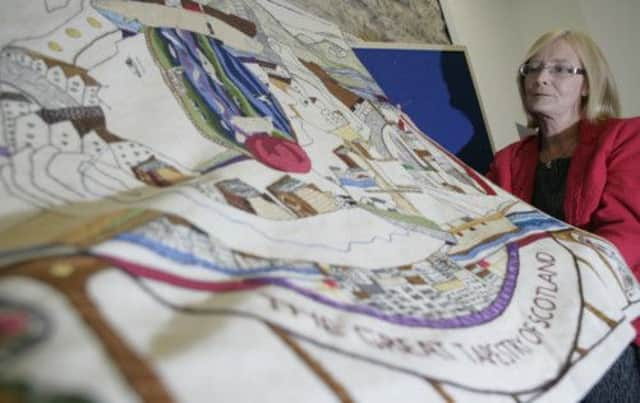Scotsman story in world’s longest tapestry


The newspaper is to star in what will be billed as the world’s longest tapestry.
William Ritchie and Charles MacLaren, who founded The Scotsman, famously deployed a thistle emblem to prick the pomposity of the middle classes in the early 19th-century capital.
Advertisement
Hide AdThe two men, the date of the newspaper’s launch in 1817, its early nickname and its original address, 347 High Street, Edinburgh, all feature in The Great Tapestry of Scotland, which will be unveiled at the Scottish Parliament later this year. The panel features a quote from philosopher David Hume, written in shorthand by The Scotsman’s editor, Ian Stewart, which states: “It is seldom that liberty of any kind is lost all at once.”
Instigated by best-selling author Alexander McCall Smith, the £200,000 project will feature about 160 historical panels, 50 more than originally planned.
A team of more than 1,000 “stitchers” from across the country have been working for two years on various sections of the tapestry, which is being made with woollen yarn that would stretch more than 300 miles.
Billed as one of the most ambitious community arts projects in the world, it has been co-ordinated by artist Andrew Crummy and historian Alistair Moffat, a former director of the Edinburgh Festival Fringe.
The tapestry charts the story of Scotland, from prehistoric times to the 21st century, including such key episodes as the Battle of Bannockburn, the Glencoe Massacre, the Act of Union, the foundation of the Bank of Scotland and the first Edinburgh International Festival.
Mr Crummy said: “The panel on newspapers has been stitched by Jan Young, who actually used to work at The Scotsman.
Advertisement
Hide Ad“Although it mentions others, the centrepiece is very much the launch of The Scotsman in 1817.
“When The Scotsman started, it was so anti-establishment and rebellious. It was a time of high corruption in Edinburgh, the city was not at its best and the founders wanted to do something about it.”
Advertisement
Hide AdThe tapestry also features a panel on Glenrothes, which is represented at Holyrood by Presiding Officer Tricia Marwick, who yesterday added a few stitches of her own. The tapestry is being put together at an artists’ studio in Dalkeith, Midlothian, before its unveiling by the author.
Mr McCall Smith said: “The creation of this wonderful tapestry has been an experience of sheer joy.”
The tapestry will be put on display at the Scottish Parliament from 3-21 September, before going on a nationwide tour.